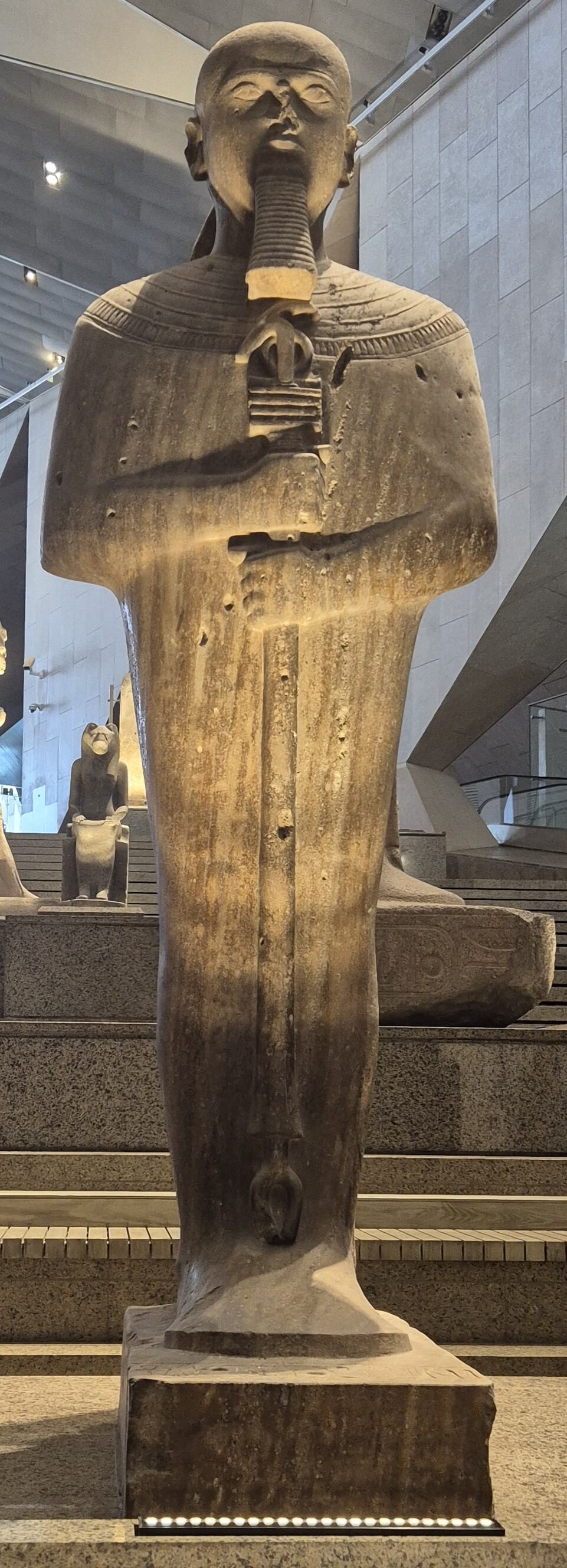
GEM 45939
Colossal Statue of God Ptah
This colossal statue represents Ptah, one of the most ancient and significant creator gods in Egyptian mythology. Worshipped in Memphis, Ptah was believed to have created the universe not by action but by the power of thought and speech—he simply “spoke” the world into existence. As such, Ptah became the patron deity of craftsmen, architects, and artists, all of whom brought ideas into tangible form, just as he had formed the cosmos.
In this statue, Ptah is depicted in a mummiform posture, wrapped tightly in a shroud, wearing a straight beard and a skullcap. He holds a was-scepter, the ankh symbol of life, and the djed ... Découvrez plus avec Premium !
Débloquez toute l'histoire de cet artéfactPassez à Premium pour accéder à la description complète, aux guides audio et au contenu exclusif de tous les artéfacts.Accédez à l'audio complet et à la description des principales œuvres du GEM pour seulement 1,99 $
Vous cherchez un autre artéfact ?